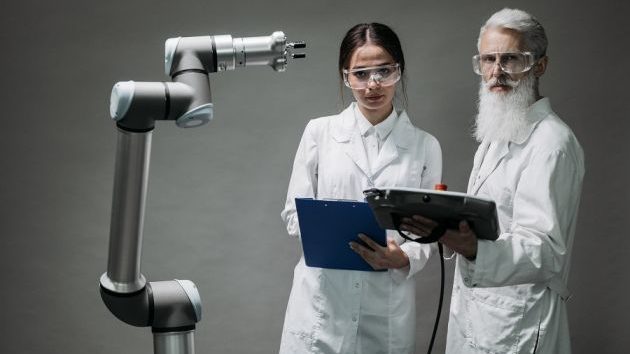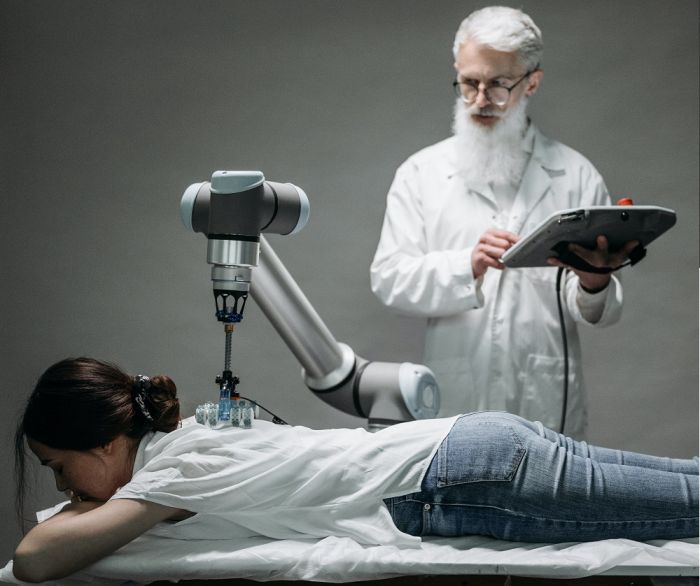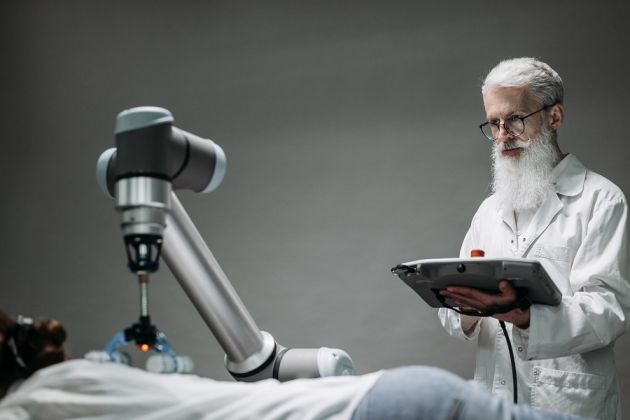
Robot-assisted surgery may sound futuristic, yet medical robots have been around for 36 years. Robotic devices may function as an extension of a surgeon’s body, providing accuracy and sensitive instruments that elevate them to superhuman status.
There are more and more uses for medical robots as technology and software continue to improve. But, in medicine, safety is always the underlying aim, so people are still there, at least for the time being, guiding the robots and supervising the tiny nuances.
Robotic Assisted Surgery

Robots, surgeons, and other medical personnel collaborate. According to the Mayo Clinic, the most frequently used robotic surgical system has arms with cameras and surgical equipment connected to them. While the robotic arms create microscopic incisions and the camera offers a view of the surgery, the surgeon controls the arms from a nearby console and directs their team through the treatment.
There are obvious advantages to utilizing a robot for some procedures. The ability of medical robots to be outfitted with miniature devices that create tiny, precise incisions allows for less invasive surgery. Robotic hands have more dexterity and range of motion than human hands, allowing them to access difficult-to-reach areas without creating a major incision in the body.
Furthermore, the camera gives a high-definition, three-dimensional image of the inside of a patient’s body. According to UCLA Health, robotic systems give greatly enlarged pictures with far higher detail than what a surgeon would view with their own eyes when standing over a patient.
Technological Innovation
Robots are constant, sterile, and precise, all of which are desirable in the medical sector. A robotic arm will not become weary or unsteady no matter how long the procedure lasts. Surgeons utilize a panel to instruct the robot, and they may even calculate distances between spots before moving the instruments.
In addition, increasing the physical distance between humans and operations decreases the chance of infection. Furthermore, the little instruments indicate that patients will have lesser scars, less discomfort and blood loss, and recover faster.
Of course, there are certain disadvantages to robot-assisted surgery. It is still surgery, and robots do not completely remove the danger of infection and other problems. Perhaps the most significant constraint is access to robots. The equipment can be costly, and surgeons must devote time to specialized training on top of their considerable medical expertise.
Several typical forms of robotic surgery are described by UCLA Health:
Colon and rectal surgery
Surgery in general
Gynecologic surgery
Endometriosis
Surgery on the head and neck
Surgery of the thorax
Urologic surgery
Surgery on the heart
According to John Hopkins Medicine, robot-assisted surgery is especially beneficial for cardiac surgery since the tiny tools are significantly less intrusive than open-heart surgery. Although open-heart surgery necessitates a surgeon cutting through the patient’s breastbone, diseases such as valve surgery, coronary artery bypass, and tumour excision can be performed with a robotic system with fewer incisions.
This technique is less hazardous and results in faster healing times, allowing patients to resume their normal lives sooner. Scarring is considerably reduced, with only a few tiny scars on the patient’s side of the chest vs a 10-inch chest scar following open-heart surgery.
Robotic Surgery’s Evolution

The first reported robot-assisted surgical surgery, according to Robotic Oncology, was a neurosurgical biopsy performed in 1985. This pioneering robotic surgery was quickly followed by robotic laparoscopic surgery, a form of minimally invasive surgery that uses flexible fibre-optic cameras. The Food and Drug Administration (FDA) authorized an endoscopic stent system in 1990.
The da Vinci Surgery System became the first FDA-approved robotic surgery system for general laparoscopic surgery in 2000, marking a watershed moment in the field. Robotic surgery has grown more frequent since then. The next generation of medical robots may soon broaden the benefits and make robotic surgery more prevalent for a broader range of diseases.
Is it possible that robots will take over the world?
Medicine is not a fight between people and machines. Currently, robotic surgery is ultimately in the hands of humans.
Surgeons continue to command the robots and are ready to intervene and take over with a human touch if necessary. Furthermore, people are still developing software code and designing robots.